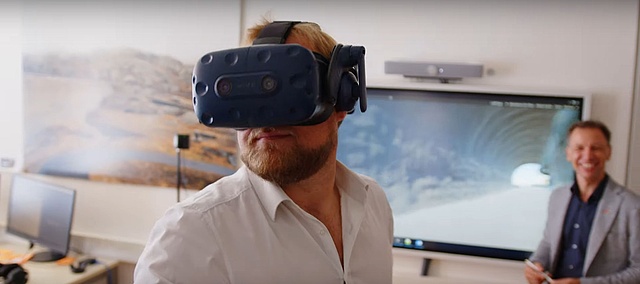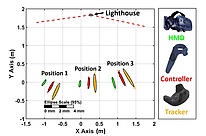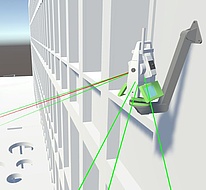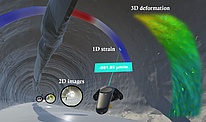Virtual Reality (VR) Technology has emerged into serious applications far beyond the entertainment sector. In the fields of archeology, crime scene investigations and the car industry this technology has already proven itself to be a sophisticated tool for the visualization and interpretation of highly complex three-dimensional content.
Also, in the field of geodesy and Structural Health Monitoring (SHM) this technology provides many advantages for geo-related data analysis. The first-person gives an intuitive perspective on multi-dimensional data sets. This increases the human data perception, because data sets can be displayed dynamically in their actual 3D context and are fully interactive for the user.
New approaches are needed in geodesy because technological advances like laser scanning and Building Information Modelling (BIM) are already changing the digital working environment of the surveying and civil engineering sector. Today the data foundation of many construction projects contains complex and overlapping 3D geometry, parallel processes and various object dependencies that challenge the capabilities of state-of-the-art software packages.
IGMS is experimenting with VR applications to investigate new perspectives on traditional geodetic workflows and how these can be improved and transferred in an 3D, object orientated and interactive environment. This should help the future surveyor to better manage multi-dimensional structural health monitoring data in complex urban scenarios or in tunneling application.
The experimental software environment has been already successfully used for the concept creation of permanent monitoring installations with geodetic total stations and GNSS devices. The 3D modelling of sensoric effects and logistic process, in combination with a representative as-build or as-planned models of the actual site, improves the integrity of the a priori accuracy estimation of the measurement setups. It also allows the determination of the final mounting positions of the instrument and the calculation of the required drilling positions even before the structure exists or is accessible in the real world.
Such VR applications require also a high integrity from the pose tracking of the VR devices themselves. Therefore, the accuracy and tracking behavior of VR devices is examined in the IGMS laboratory. Furthermore, possible use cases beyond the initial visualization purpose as low-cost indoor positioning systems and coordinate measurement units are also investigated.



